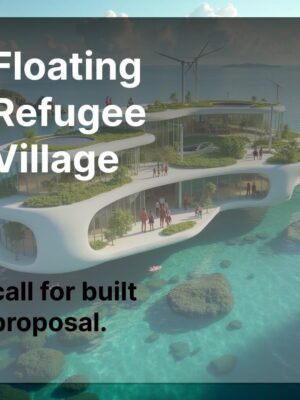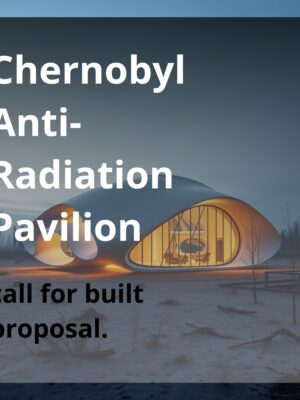[premise]
The 1986 Chernobyl disaster remains a profound scar on human history, a stark reminder of the catastrophic potential of nuclear energy. The Chernobyl Exclusion Zone, while a place of tragedy, has evolved into a unique ecosystem and a powerful site of pilgrimage and dark tourism. Visitors are drawn to witness the raw, untamed landscape and the silent, decaying remnants of a hastily abandoned world. This competition seeks to address the inherent paradox of visiting such a location: the desire to learn and remember versus the need for physical protection. The challenge is to create a structure that functions not only as a memorial but as a tangible shield, offering a safe space for reflection within a hostile environment.
[objective]
The primary objective is to design the Chernobyl Anti-Radiation Pavilion, a landmark structure that masterfully integrates advanced safety design with a deeply resonant memorial experience. Participants must propose an architectural intervention that provides verifiable shielding from ambient radiation, creating a safe haven for visitors to rest and contemplate. This pavilion should also serve an educational purpose, using its form, materials, and integrated displays to narrate the story of the disaster, honor the liquidators, and explore the ongoing environmental and human consequences. The final design should be a powerful, respectful, and innovative piece of architecture that enhances the visitor’s journey through the Exclusion Zone while prioritizing their well-being.
[site]
The proposed site is a conceptual plot located within the Chernobyl Exclusion Zone, along one of the primary tourist routes leading towards the city of Pripyat. To provide flexibility, entrants are asked to define their own specific site within a designated area, justifying their choice based on visitor flow, narrative potential, and existing radiation levels. The proposed construction footprint should be between 400 and 1,200 square meters. Proposals must consider the specific ground conditions, potential soil contamination, and the stark, flat topography of the region, using the landscape as a crucial element of the architectural statement and the visitor’s experience.
[constraints]
The paramount constraint is human safety. Designs must detail the specific materials and construction techniques used to achieve effective radiation shielding (e.g., lead-lined panels, dense concrete, earth berms, specialized glazing). The structure must have a minimal ecological impact during and after construction, using durable, low-maintenance materials resilient to the harsh Ukrainian climate. The design must be accessible to individuals with mobility challenges. Aesthetically, the pavilion must avoid sensationalism, adopting a tone of solemn respect and remembrance. The structure should aim for partial self-sufficiency in terms of energy and water, given the limited infrastructure in the Zone.
[evaluation criteria]
Submissions will be judged on five key criteria. First, the innovation and effectiveness of the safety design, focusing on how seamlessly radiation shielding is integrated into the overall architectural concept. Second, the memorial and educational impact, assessing the power of the narrative conveyed through the space. Third, the conceptual strength and aesthetic quality of the architecture, including its symbolic resonance and relationship with the surrounding landscape. Fourth, the technical feasibility and sustainability of the proposal, considering materials, structural integrity, and long-term durability. Finally, the overall quality of the visitor experience, from circulation to the emotional journey fostered by the design.
[budget]
The notional construction and outfitting budget for the Chernobyl Anti-Radiation Pavilion is set at $7 million USD. This figure is intended to guide the scale and complexity of the proposals, encouraging innovative and cost-effective solutions. Entrants must demonstrate how their design can be realized within this financial framework. Proposals that showcase an intelligent use of materials to achieve the critical safety and memorial objectives in a financially responsible manner will be viewed favorably. The budget should cover all aspects, from foundation work and shielding implementation to interior finishing and interpretive exhibit installation.
Schedule and Fees
- Early Registration: Aug 30 23:59 GMT/UTC ($27.99 USD)
- Final Registration & Submission: Sep 17 23:59 GMT/UTC ($48 USD)
- Results Announced: Oct 16 23:59
Submission Requirements
- 1 x A1 Sheet: Explaining the value proposition or design (each PDF at least 150dpi, max 20 MB)
Outcome
- Winner x 1: Proposal for Building + Media Outreach and Exposure + Certificate (shareable link forever)
- Runners Up x 4: Media Outreach and Exposure + Certificate (shareable link forever)
- Participation Certificates: For everyone (shareable link forever)


